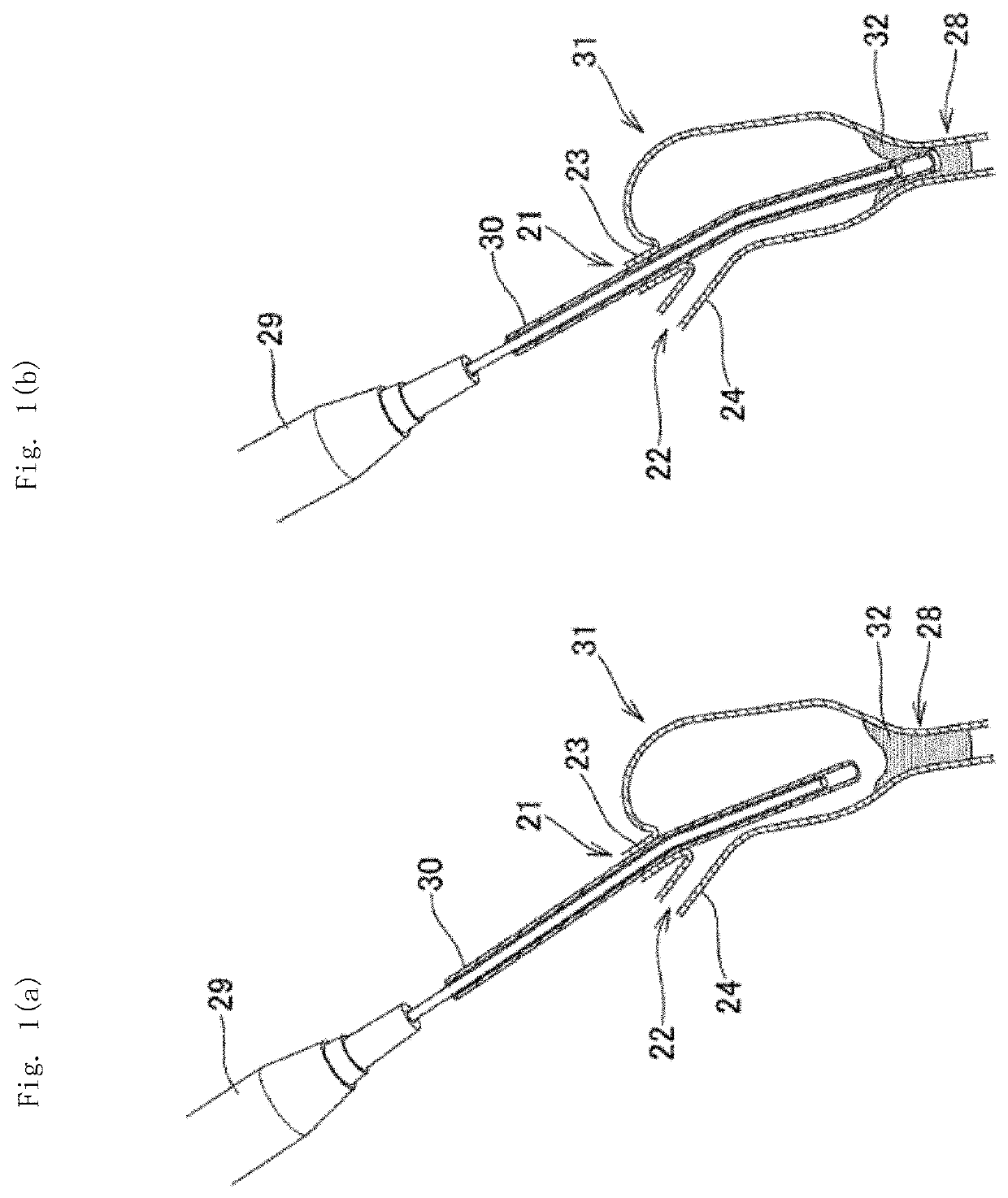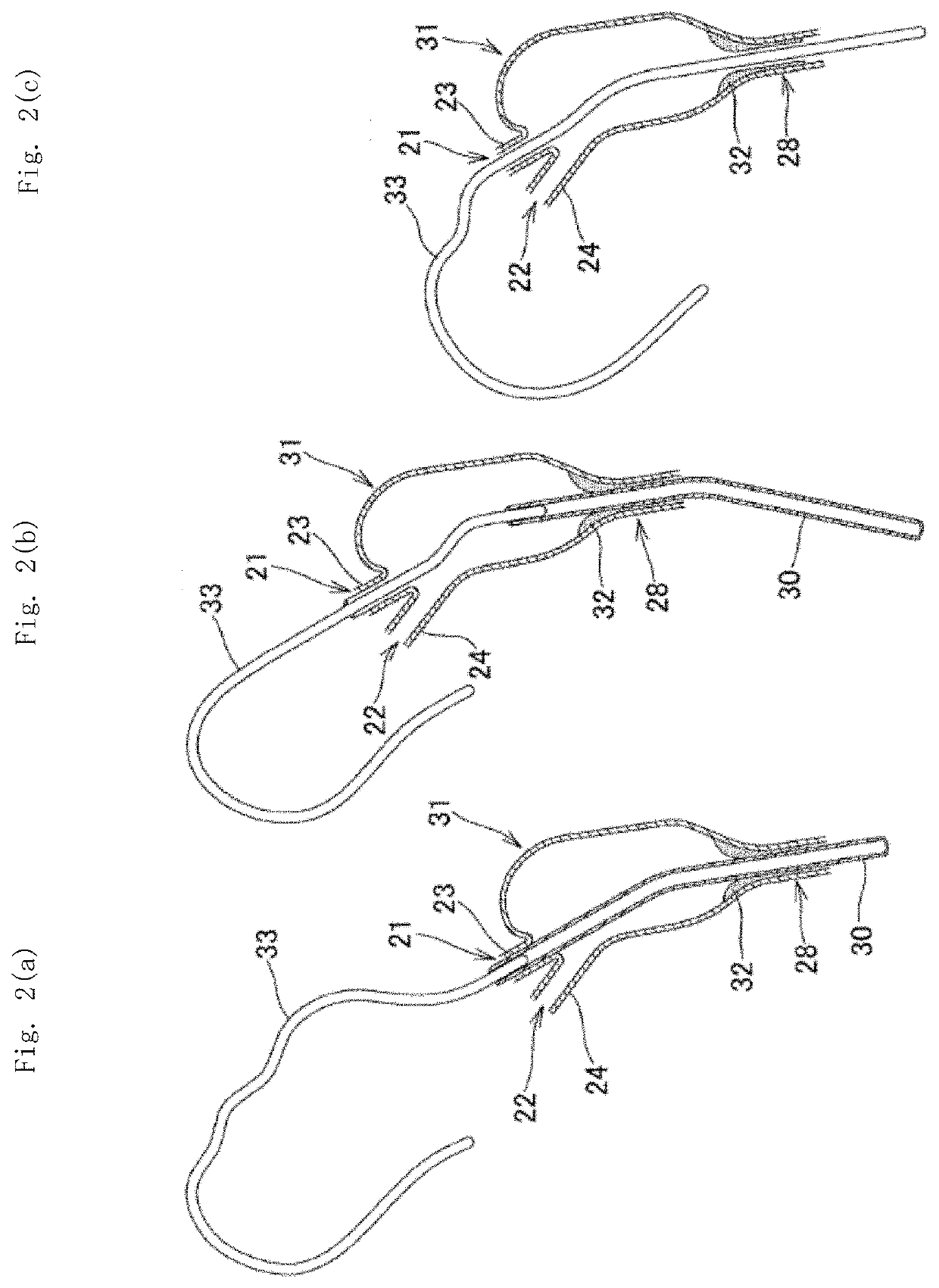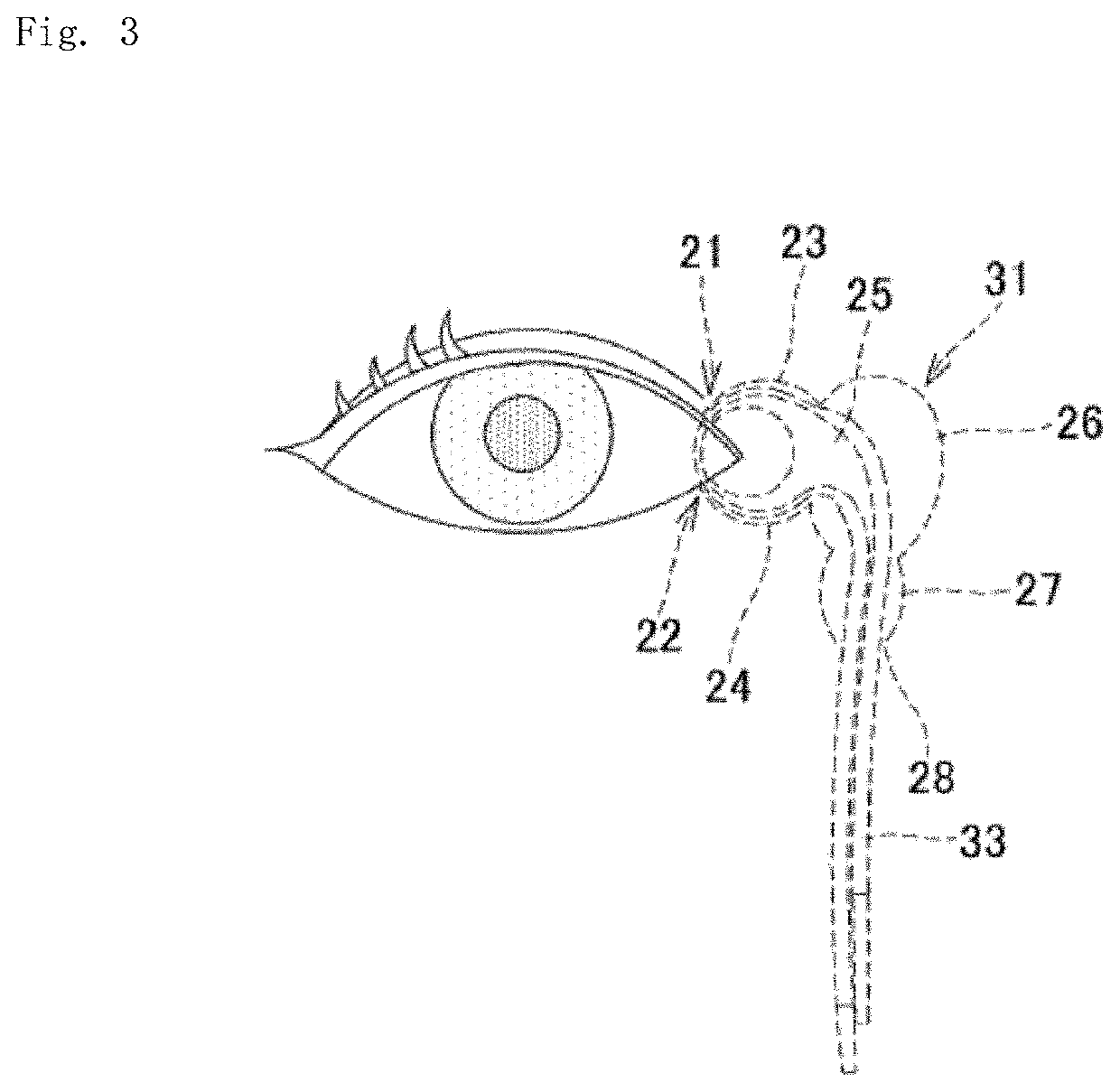Lacrimal duct tube
a lacrimal duct and tube technology, applied in the field of lacrimal duct tubes, can solve the problems of poor therapeutic outcomes, heavy patient burden, and damage to the wall of the lacrimal duct sheath, and achieve the effect of convenient checking, simple and safe operation, and smooth movement of the lacrimal duct tub
- Summary
- Abstract
- Description
- Claims
- Application Information
AI Technical Summary
Benefits of technology
Problems solved by technology
Method used
Image
Examples
example 1
[0204]A lacrimal duct tube having the tubular members 2 of the structure illustrated in FIG. 11 was fabricated in such a manner as described below.
[0205]First, a polyurethane tube for base end part of the same diameter was abutted with the other end of a tube in which the terminal end part had a single layer and the main body had a four-layer structure, and a tube for reinforcement member was laid on the surfaces of the tube for main body of the four-layer structure and the tube for base end part including the abutted portions. The side surface of a rod for connection member was connected to the side surface of the tube for reinforcement member, the position of the leading end of the rod was adjusted to come closer to the one end side than the abutted surfaces, and then the connection portions of the tubes were thermally welded.
[0206]Then, the base end part was obliquely cut from a portion near the one end to a portion near the other end to form the inlet / outlet port, thereby fabric...
example 2
[0232]The lacrimal duct tube having a narrow terminal end part was fabricated in such a manner like the example 1 as described above. The narrow terminal end was positioned at the opening side. After the lacrimal duct tube of the example 1 is fabricated, a mandrel in the shape of a rod having a 0.7 mm outer diameter was pushed into the terminal end part of the tubular member from the opening. After that, the tip of the tubular members were thermally compressed using a shrink tube to form a narrow terminal end part (0.5 mm long) with a 0.7 mm inner diameter.
The components of the used members are as follows:
(Tubular Members)
(1) Terminal End Part
[0233]Low-density polyethylene
[0234]Length of the terminal end part: about 4 mm, tapered down with a diameter of 0.9 to 1.3 mm.
In the terminal end part, a lumen has the inside diameter part that got narrow to 0.7 mm in diameter in the section of 0.5 mm in length from the opening at extreme tip end.
(2) Main Body
[0235]Innermost layer: low-density...
example 3
[0243]The lacrimal duct tube 1b having the tubular members 2a of the structure illustrated in FIG. 19 was fabricated in such a manner as described below.
[0244]First, a polyurethane tube for base end part of the same diameter was abutted with the other end of a tube in which the terminal end part 8 had a single layer and the main body 9 had a four-layer structure, and a tube for reinforcement member was laid on the surfaces of the tube for main body of the four-layer structure and the tube for base end part including the abutted portions. The side surface of a rod for connection member was connected to the side surface of the tube for reinforcement member, and the position of the leading end of the rod was adjusted to come closer to the one end side than the abutted surfaces, and then the connection portions of the tubes were thermally welded. Accordingly, the leading end of the connection member 3 was arranged at the same position as the one end side of the tube for reinforcement me...
PUM
 Login to View More
Login to View More Abstract
Description
Claims
Application Information
 Login to View More
Login to View More - R&D
- Intellectual Property
- Life Sciences
- Materials
- Tech Scout
- Unparalleled Data Quality
- Higher Quality Content
- 60% Fewer Hallucinations
Browse by: Latest US Patents, China's latest patents, Technical Efficacy Thesaurus, Application Domain, Technology Topic, Popular Technical Reports.
© 2025 PatSnap. All rights reserved.Legal|Privacy policy|Modern Slavery Act Transparency Statement|Sitemap|About US| Contact US: help@patsnap.com



